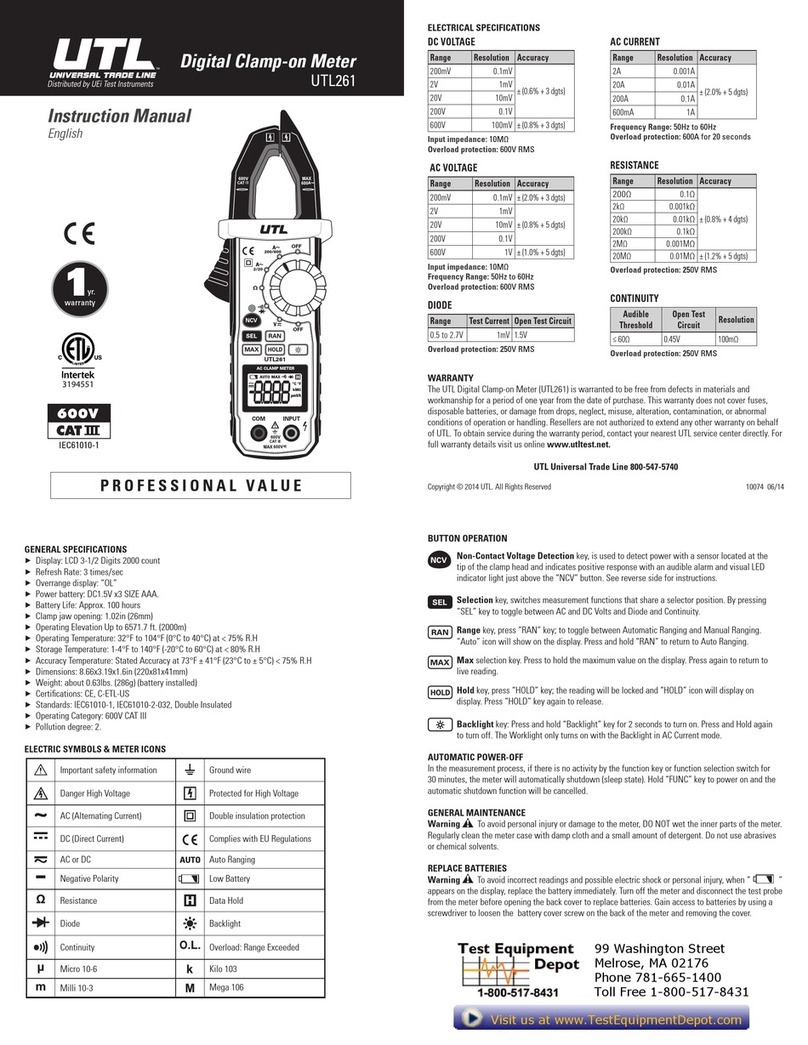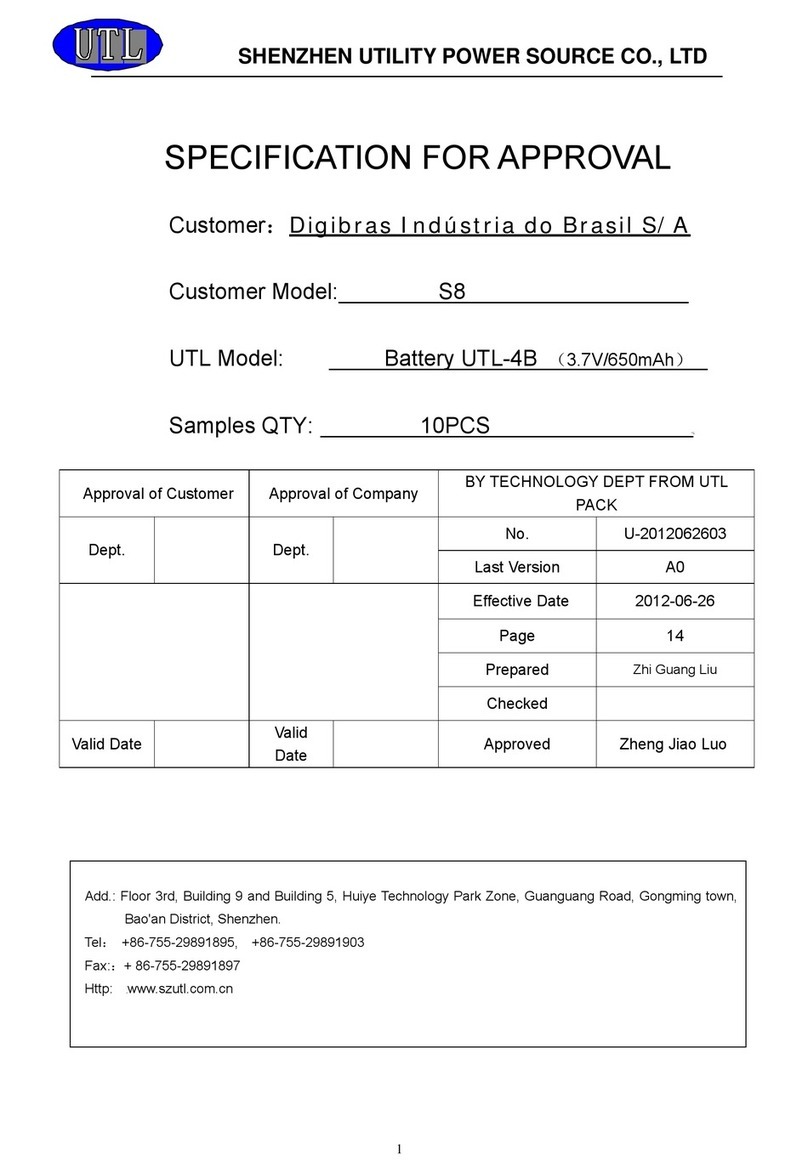WARNING!
Under NO circumstance should you expose batteries to extreme heat or
fire as they may explode and cause injury.
3. Place a fresh 9V battery inthe compartment.
NOTE: If you do not plan to use the meter for a month or more,
remove the battery and store it in an area that won’t be damaged by a
leaking battery.
4. Reattach the battery compartment cover to the meter and
reinstall the screw.
S p e c i f i c a t i o n s
M a i n t e n a n c e
Periodic service
WARNING!
Repair and service of this instrument is to be performed by qualified
personnel only. Improper repair or service could result in physical
degradation of the meter. This could alter the protection from
electrical shock and personal injury this meter provides to the
operator. Perform only those maintenance tasks that you are
qualified to do.
These guidelines will help you attain long and reliable service from
your meter:
1. Calibrate your meter annually to ensure it meets original
performance specifications.
2. Keep your meter dry. If it gets wet, wipe it dry immediately. Liquids
damage electronic circuits.
3. Whenever pra c t i cal, keep the meter away from dust and dirt, which
can cause premature wear.
4. Although your meter is built to withstand the rigors of daily use, it
can be damaged by severe impacts. Use reasonable caution when
using and storing the meter.
Cleaning and Decontamination
Periodically clean your meter’s case using a damp cloth. DO NOT use
abrasives, cleaning solvents or strong detergents, as they may damage
the finish or affect the reliability of the structural components.
Battery Replacement
Always use a fresh replacement battery of the specified size and type.
Immediately remove the old or weak battery from the meter and dis-
pose of it in accordance with your local disposal regulations. Old or
defective batteries can leak chemicals that corrode electronic circuits.
WARNING!
To avoid electric shock, be sure to turn off the meter’s power and
disconnect both test leads from any equipment before you remove
or install batteries.
To install a new battery, follow these procedures:
1. Remove the screw from the battery compartment cover on the
back of the meter and lift the cover.
2. Remove and discard the old battery. Always dispose of old batteries
promptly in a manner consistent with local disposal regulations.
UTL260-MAN P. 4
Environment conditions Installation categories II, 600V max. to earth
Pollution degree 2
Altitude < 2000 m
Operating temperature 0˚~40˚C (<80% RH)
Storage temperature -10˚~60˚C (<70% RH, battery removed)
Max. Voltage between 600 V rms
terminals and earth ground
Operating principal Dual slop integration
Sample rate 2 times/sec for digital data
Display 3-1/2 digits LCD display with max. Reading 1999
Automatic indication of functions and symbols
Range selection Manual
Over range indication LCD will display “1”. If measure value is over
2000V the LCD will display “1” (AC V & DC V range)
Low battery indication The “ “ is displayed when the battery is under
the proper operation range
Power source DC 3VX3, CR2032
Polarity indication “-” displayed automatically
Jaw opening diameter cables 28mm
Maximum conductor size 28mm
Dimensions 194 (L) x 72 (W) x 35 (H) mm
Weight 200g. Approx. (battery included)
Accessories Manual
Test leads
Carrying case


























